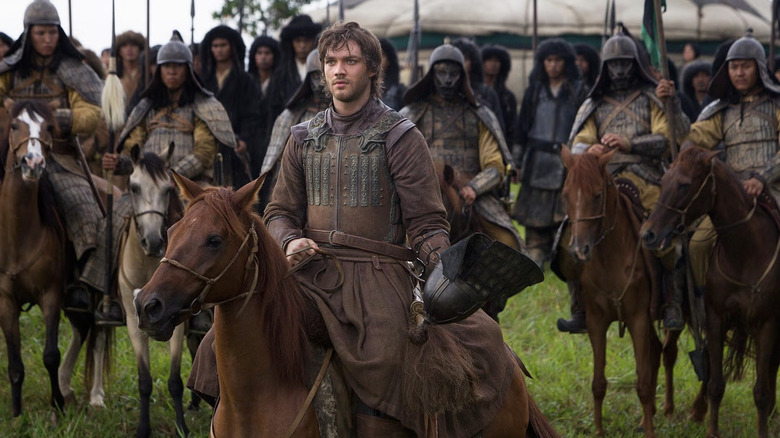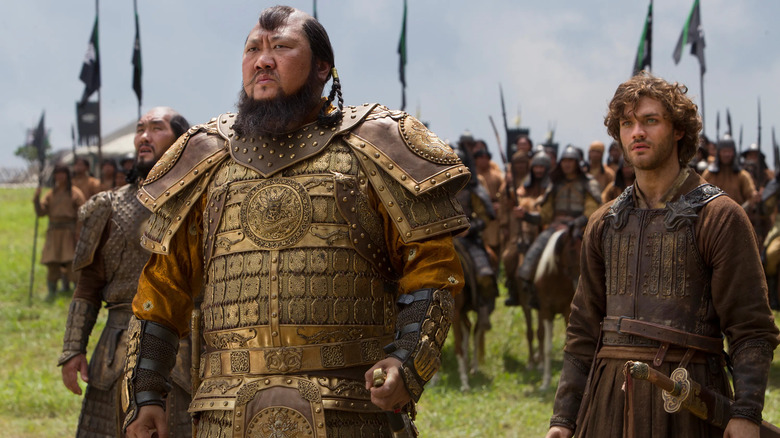Imagine if you will, we’re back in the year 2014. We are deep into the Obama presidency, where the idea of Donald Trump running for President of the United States is little more than a late-night talk show punchline. And now Netflix, the DVD distribution service, is experimenting with the crazy idea of putting movies and TV … on the internet?
Using the existing libraries from Hollywood studios, Netflix created a “new media” that quickly branched out from streaming existing content to reviving fan favorite shows like “Arrested Development,” proving that the streaming service wasn’t limited to just distributing existing content, but could also finance and premiere new series as well.
But it’s one thing to revive a canceled show, in which all the primary creative work (like developing, casting, and establishing the visual language of the series) has already been completed. It’s another to create an entirely original series. With the one-two punch of David Fincher’s political drama “House of Cards” and the prison dramedy “Orange is the New Black,” Netflix proved it had what it takes to compete in the arena against premium TV platforms like HBO. And now they wanted to go after HBO’s crown jewel: “Game of Thrones.”
Enter: “Marco Polo.” Originally developed for Starz by the Weinstein Company, Netflix picked up the series for a 10-episode order with a budget of approximately $90 million, second only to “Game of Thrones” itself. Retelling the story of Marco Polo’s years alongside Kublai Khan in the heart of the Mongol empire, the series brought an epic sense of scale to the period story, but the show was suddenly canceled by Netflix in 2016, which at the time was considered a rare occurrence. So why did this epic series of power and conquest get canceled?
Marco Polo’s epic price tag was too high for Netflix
Recreating the court of Kublai Khan was a pricey endeavor, and “Marco Polo” never got close to generating either the critical reception or the fan base of “Game of Thrones.” Critics called it “opulent” and “lifeless,” a far cry from the dramatically compelling fantasy series Netflix was chasing after.
This was the first stumble for Netflix Original programming, a sign that the streamer wasn’t supernaturally gifted with the ability to hit a home run at every at-bat. And for Netflix, it was a costly lesson. By the time it was canceled, “Marco Polo” was a $200 million loss for Netflix. The decision to end the series was reportedly a mutual one between Netflix and the Weinstein Company, a hint that everyone involved acknowledged the series had failed to live up to their high hopes.
Now, nearly 10 years after its cancellation, “Marco Polo” is little remembered in the pantheon of Netflix’s increasingly sprawling library. Meanwhile, “Game of Thrones” has slowly been churning out its own spin-offs, although only two have made it out of development hell.
Netflix, for its part, has never given up on trying to manufacture its own “Game of Thrones.” Their latest attempt, an adaptation of the Chinese sci-fi novel “Three Body Problem” by “Game of Thrones” showrunners David Benioff and D.B. Weiss, is estimated to have cost over $233 million for its first season. Despite its hefty price tag, the series appears to be a success for Netflix, and a second season is on the way, so fans of “Three Body Problem” can thank “Marco Polo” for charting the path forward, even if it didn’t survive to see that day.










